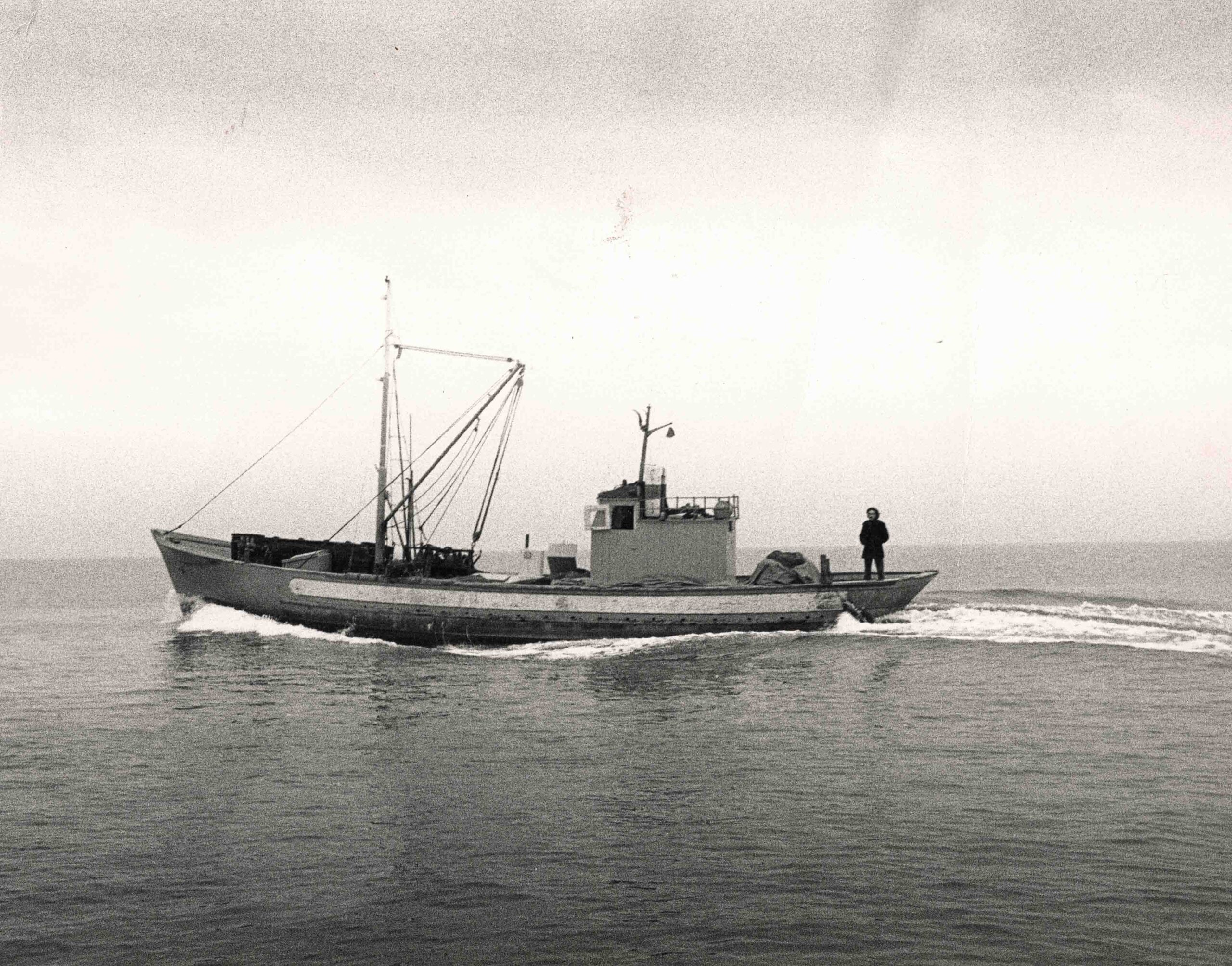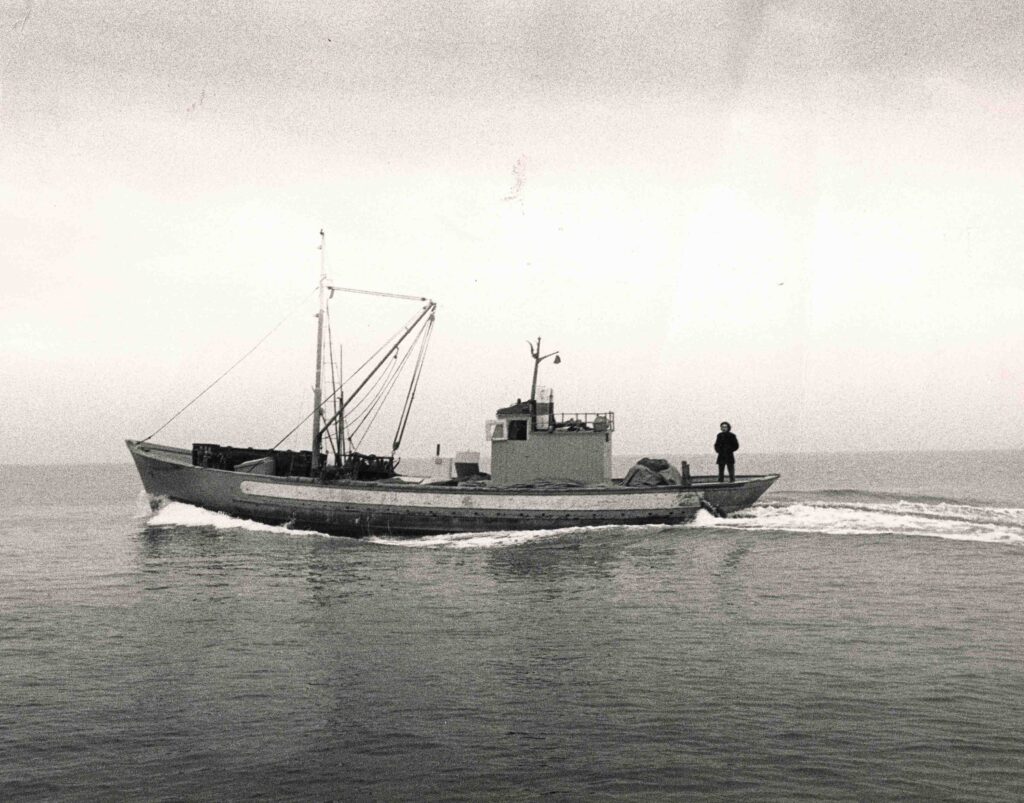Jannis Kounellis: Labyrinth without Walls

- Location:
- Exhibition Hall A
- Opening:
- Artist:
- Jannis Kounellis
- Curatorship:
- David Barro
- Downloads:
Jannis Kounellis’s work is a journey through time, the odyssey of persistence or the obsessive return to ideas that need to be infused with new meaning. Infiltrating history is like wading into the ocean to surrender yourself to a labyrinth without walls. Kounellis defined himself as both an ancient man and a modern painter. Because his vision was archaeological, like an excavation into memory that was always based on a critical re-reading of the past, interpreted through his own, radically contemporary language. In this case, the exhibition emerges as a wreckage of sorts, consisting of a series of elements that allude to travel, migration and maritime transport, fundamental for globalisation, although now almost obsolete. Kounellis expresses a longing for the poetic dimension of travel, lost in the industrial age, and this exhibition conveys that sense of physical and emotional displacement.
The main installation consists of a set of nine Venetian sails arranged in a fan shape, evoking stories of navigation, memory and history. In this work, the sails, which date from the 17th century to more recent times, symbolise Venice’s cultural heritage and its connection to the Mediterranean, but also a critical nostalgia regarding the transformation of maritime trade and the absence of the individual imprint on its industry today. These sails are paintings that remind us how sailboats were decorated with markings that identified them and their crews, in many cases with shapes that offered a certain protection through their religious status. It is, therefore, a kind of lament and tribute, a warning that every history is important.
The exhibition also includes another series of works with sails that the artist created years later, well into the 21st century: on the one hand, he reused old white Mallorcan cotton sails; on the other, colourful Italian sails that twist around like a Caravaggesque foreshortening. Stretched and folded over steel frames, these sails, which are shown bent and creased, marked by use, retain the memory of their previous life at sea. Through materials that are imbued with meaning, Kounellis proposes a reflection on the human imprint on objects, but also on painting and its possibilities. This is all evident in another of his most representative series, “Albatross” (2001), which consists on a set of works composed of broken sections of a wooden boat that are suspended in front of steel plates hanging askew, evoking the wear and tear and the memory of the objects. These works are accompanied by a huge hull fragment of the same boat, which draws viewers’ attention through its vertical forcefulness. Once again, implicit in the artist’s journey is a drama that must be deciphered. Because Kounellis is never a neutral artist, neither are his materials nor those of his supports. Weight, like the weight of history, is what each material conceals, and size, too, relates to what it means to be human.
“Jannis Kounellis: Labyrinth without Walls” reflects on and draws inspiration from the artist’s childhood in the port of Piraeus and its connection with the sea as a space for cultural exchange. These works bear the scent of origin, of mythological time, of the setting for life experience or inheritance. The artist himself described this by saying that there is no such thing as isolated tradition, and it is through this feeling of a journey that we can best explain his penchant for labyrinths, a theme that extends far beyond his drawings. Because travelling is not just a physical movement, but also a life journey that shapes our identity through the changing settings, places, cultures and experiences we encounter. Kounellis was always fascinated by far-off places, by exploring new horizons. Displacement is a contemporary circumstance, and it is in this sense that we should understand the labyrinth, which, from a philosophical standpoint, symbolises the initiatory path to wisdom, a gateway to the intellectual challenge of embracing uncertainty and discovering that around every corner lies a new beginning with no definitive answer, inviting us to continue exploring. The labyrinth is thus an inner journey, a delving into the abyss in search of a lost centre. The labyrinth is the echo of history.
In collaboration with KEWENIG, Palma / Berlín and Archivio Kounellis.
Jannis Kounellis (Piraeus, Greece, 1936 – Rome, 2017) is one of the key artists for the history of art in the second half of the 20th century. After studying at the University of Athens, he attended courses at the Academy of Arts in Rome, where he began to develop his career as a painter, initially depicting letters and graphics on unusual materials, and later moving beyond the canvas as a support and incorporating found materials, living beings and organic substances, while replacing the canvas with metal plates that would become the primary surface for his works. Through his art, Kounellis creates tension between materials and brings together contrasting situations, almost always using industrial materials linked to the world of work, which acquire a semantic quality. In the late 1960s, he began creating highly theatrical sculptures, installations and performances in order to deal with the fragmentary and ephemeral; it was then that he became one of the leading names in arte povera, which dominated the contemporary art scene in the 1970s.
Jannis Kounellis was included in the exhibition “When Attitudes Become Form”, curated by Harald Szeemann at the Kunsthalle Bern in 1969, as well as in several editions of Documenta and the Venice Biennale. He has recently been the subject of two major retrospective exhibitions, one curated by Germano Celant at the Fondazione Prada in Venice in 2019 and another by Kit Hammonds at the Museo Jumex in Mexico City in 2023. Among his most notable institutional solo exhibitions were those held at the Kunstmuseum Luzern, Lucerne (1977); Musée d’Art Moderne de la Ville de Paris (1980); Whitechapel Gallery, London (1981); Städtische Galerie im Lenbachhaus, Munich (1985); Institute of Contemporary Art, Nagoya (1985); Castello di Rivoli, Turin (1988); Stedelijk Museum, Amsterdam (1990); Kestner Gesellschaft, Hanover (1991); Museo Nacional Centro de Arte Reina Sofía, Madrid (1996); Albertina, Vienna (2005); Kunstmuseum Liechtenstein, Vaduz (2006); Museo d’Arte Contemporanea Donnaregina, Naples (2006); Neue Nationalgalerie, Berlin (2007); Museo d’Arte Contemporanea Roma (MACRO), Rome (2016); Walker Art Centre, Minneapolis (2022); and Museo Jumex, Mexico City (2023), among others. Jannis Kounellis has also had a significant presence in Mallorca, represented by Galería Pelaires and Kewenig Palma/Berlin.
His work features in prominent international collections such as the Kunstmuseum Bonn; K21 Kunstsammlung Nordrhein-Westfalen, Düsseldorf; MoMA – Museum of Modern Art, New York; Centre Pompidou, Paris; Tate Britain, London; Solomon R. Guggenheim Museum, New York; Centre Pompidou, Paris; Museo Nacional Centro de Arte Reina Sofía, Madrid; Museu Serralves – Museu de Arte Contemporânea, Porto; Stedelijk Museum, Amsterdam; Migros Museum für Gegenwartskunst, Zurich; and CGAC – Centro Galego de Arte Contemporánea, Santiago de Compostela.

